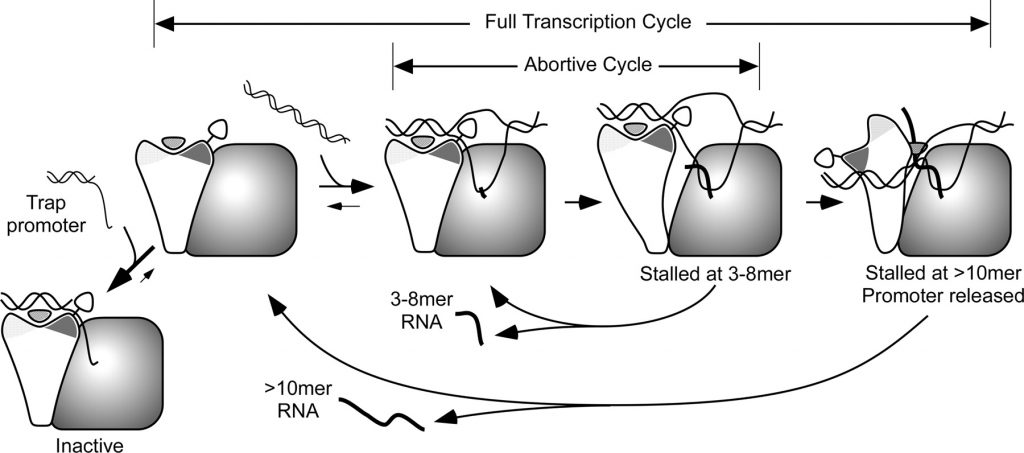Initial bubble collapse plays a key role in the transition to elongation in T7 RNA polymerase
Peng Gong, Edward A. Esposito and Craig T. Martin, J. Biol. Chem.279, 44277-44285, 2004

RNA polymerases bind to specific sequences in DNA, melt open duplex DNA around the start site, and start transcription within the initially melted bubble. The initially transcribing complex is relatively unstable, releasing short abortive products. After synthesis of a minimal length of RNA (about 10-12 bases in the T7 system), RNA polymerases complete the transition to a processive (highly stable) elongation phase and lose the initial promoter contacts. The current study strongly supports a model for T7 RNA polymerase in which initial bubble collapse from position ?4 to position +3 is responsible for initiating RNA displacement in the transition process. More specifically, collapse of the bubble from position ?4 to position ?1 indirectly and energetically facilitates the direct strand invasion offered by collapse at positions +1 to +3. Parallel work shows that promoter release, another key event occurring during this stage of transcription, begins after translocation to position +8 and is largely complete by translocation to about position +12. The timing of promoter release agrees with the timing of initial bubble collapse determined by our previous fluorescence studies, suggesting that these two events are closely related.